Jia Hao
Multi-Level Decoupled Relational Distillation for Heterogeneous Architectures
Feb 10, 2025Abstract:Heterogeneous distillation is an effective way to transfer knowledge from cross-architecture teacher models to student models. However, existing heterogeneous distillation methods do not take full advantage of the dark knowledge hidden in the teacher's output, limiting their performance.To this end, we propose a novel framework named Multi-Level Decoupled Relational Knowledge Distillation (MLDR-KD) to unleash the potential of relational distillation in heterogeneous distillation. Concretely, we first introduce Decoupled Finegrained Relation Alignment (DFRA) in both logit and feature levels to balance the trade-off between distilled dark knowledge and the confidence in the correct category of the heterogeneous teacher model. Then, Multi-Scale Dynamic Fusion (MSDF) module is applied to dynamically fuse the projected logits of multiscale features at different stages in student model, further improving performance of our method in feature level. We verify our method on four architectures (CNNs, Transformers, MLPs and Mambas), two datasets (CIFAR-100 and Tiny-ImageNet). Compared with the best available method, our MLDR-KD improves student model performance with gains of up to 4.86% on CIFAR-100 and 2.78% on Tiny-ImageNet datasets respectively, showing robustness and generality in heterogeneous distillation. Code will be released soon.
WEPO: Web Element Preference Optimization for LLM-based Web Navigation
Dec 14, 2024



Abstract:The rapid advancement of autonomous web navigation has significantly benefited from grounding pretrained Large Language Models (LLMs) as agents. However, current research has yet to fully leverage the redundancy of HTML elements for contrastive training. This paper introduces a novel approach to LLM-based web navigation tasks, called Web Element Preference Optimization (WEPO). WEPO utilizes unsupervised preference learning by sampling distance-based non-salient web elements as negative samples, optimizing maximum likelihood objective within Direct Preference Optimization (DPO). We evaluate WEPO on the Mind2Web benchmark and empirically demonstrate that WEPO aligns user high-level intent with output actions more effectively. The results show that our method achieved the state-of-the-art, with an improvement of 13.8% over WebAgent and 5.3% over the visual language model CogAgent baseline. Our findings underscore the potential of preference optimization to enhance web navigation and other web page based tasks, suggesting a promising direction for future research.
AsConvSR: Fast and Lightweight Super-Resolution Network with Assembled Convolutions
May 05, 2023Abstract:In recent years, videos and images in 720p (HD), 1080p (FHD) and 4K (UHD) resolution have become more popular for display devices such as TVs, mobile phones and VR. However, these high resolution images cannot achieve the expected visual effect due to the limitation of the internet bandwidth, and bring a great challenge for super-resolution networks to achieve real-time performance. Following this challenge, we explore multiple efficient network designs, such as pixel-unshuffle, repeat upscaling, and local skip connection removal, and propose a fast and lightweight super-resolution network. Furthermore, by analyzing the applications of the idea of divide-and-conquer in super-resolution, we propose assembled convolutions which can adapt convolution kernels according to the input features. Experiments suggest that our method outperforms all the state-of-the-art efficient super-resolution models, and achieves optimal results in terms of runtime and quality. In addition, our method also wins the first place in NTIRE 2023 Real-Time Super-Resolution - Track 1 ($\times$2). The code will be available at https://gitee.com/mindspore/models/tree/master/research/cv/AsConvSR
Perception-Distortion Balanced ADMM Optimization for Single-Image Super-Resolution
Aug 16, 2022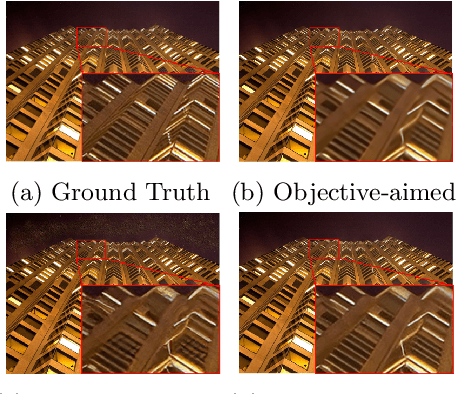
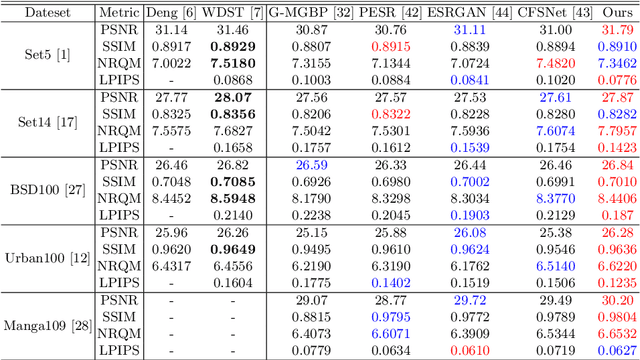


Abstract:In image super-resolution, both pixel-wise accuracy and perceptual fidelity are desirable. However, most deep learning methods only achieve high performance in one aspect due to the perception-distortion trade-off, and works that successfully balance the trade-off rely on fusing results from separately trained models with ad-hoc post-processing. In this paper, we propose a novel super-resolution model with a low-frequency constraint (LFc-SR), which balances the objective and perceptual quality through a single model and yields super-resolved images with high PSNR and perceptual scores. We further introduce an ADMM-based alternating optimization method for the non-trivial learning of the constrained model. Experiments showed that our method, without cumbersome post-processing procedures, achieved the state-of-the-art performance. The code is available at https://github.com/Yuehan717/PDASR.
NTIRE 2021 Challenge on Quality Enhancement of Compressed Video: Methods and Results
May 02, 2021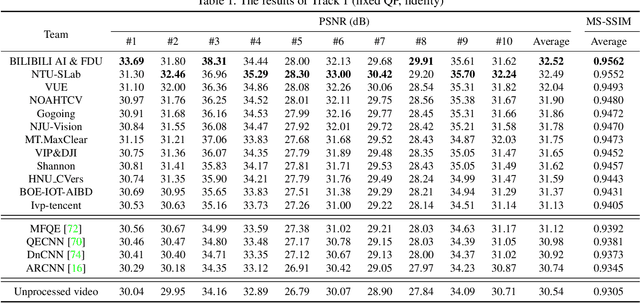
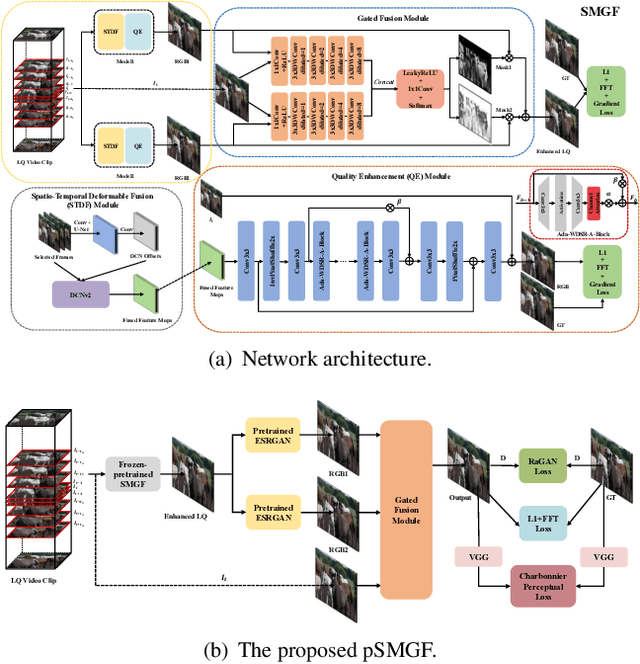

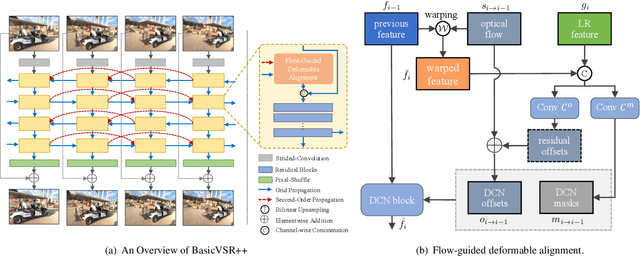
Abstract:This paper reviews the first NTIRE challenge on quality enhancement of compressed video, with a focus on the proposed methods and results. In this challenge, the new Large-scale Diverse Video (LDV) dataset is employed. The challenge has three tracks. Tracks 1 and 2 aim at enhancing the videos compressed by HEVC at a fixed QP, while Track 3 is designed for enhancing the videos compressed by x265 at a fixed bit-rate. Besides, the quality enhancement of Tracks 1 and 3 targets at improving the fidelity (PSNR), and Track 2 targets at enhancing the perceptual quality. The three tracks totally attract 482 registrations. In the test phase, 12 teams, 8 teams and 11 teams submitted the final results of Tracks 1, 2 and 3, respectively. The proposed methods and solutions gauge the state-of-the-art of video quality enhancement. The homepage of the challenge: https://github.com/RenYang-home/NTIRE21_VEnh
 Add to Chrome
Add to Chrome Add to Firefox
Add to Firefox Add to Edge
Add to Edge